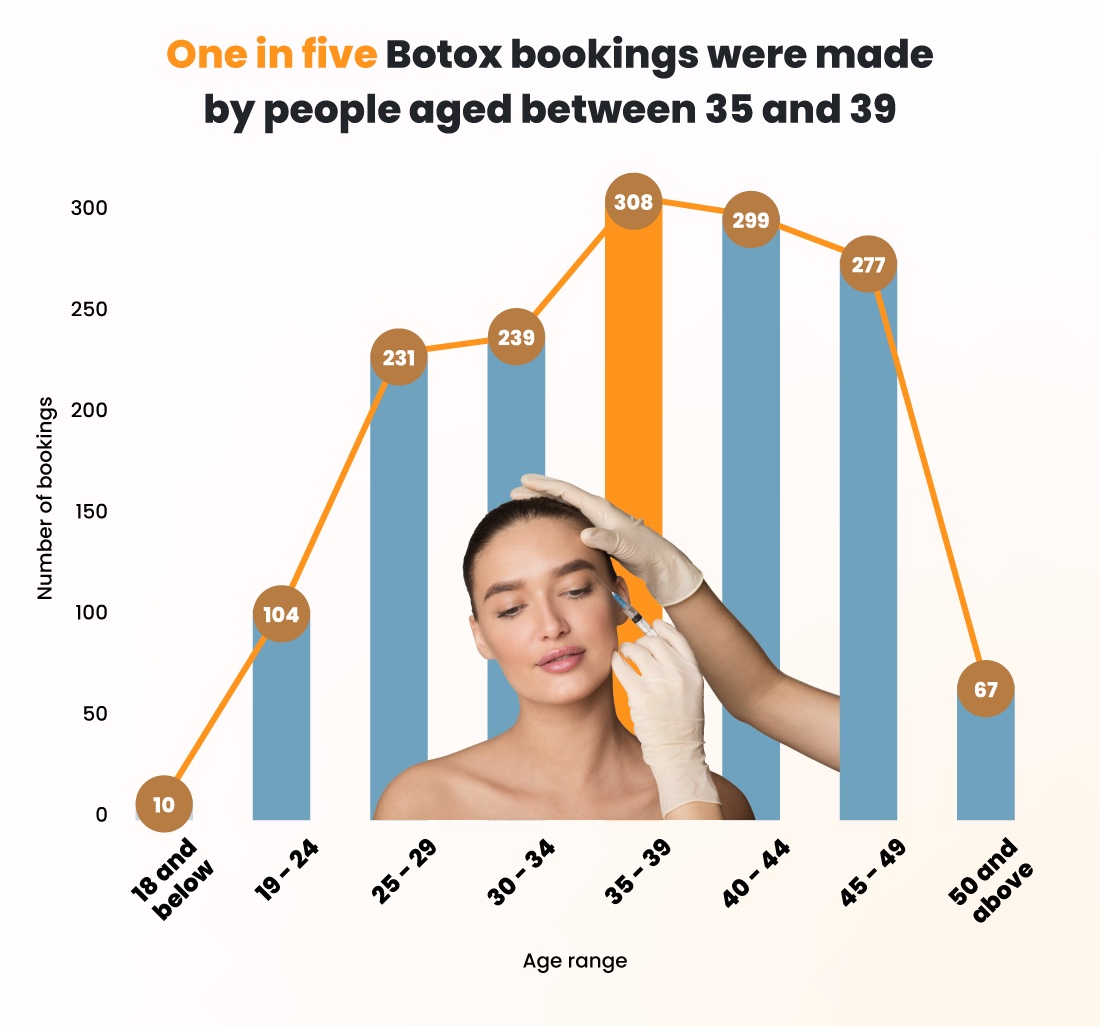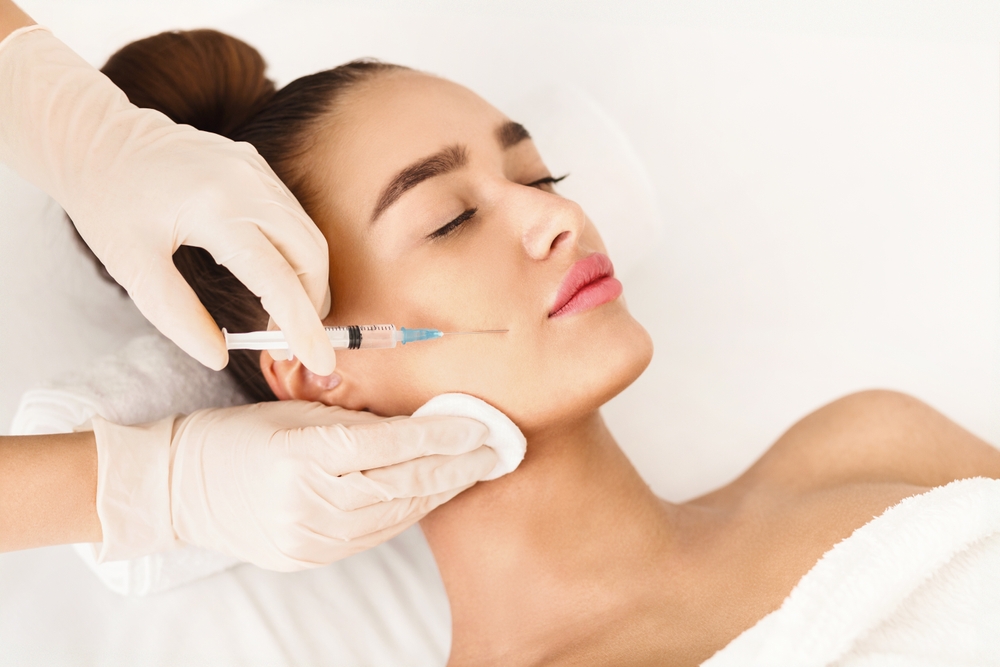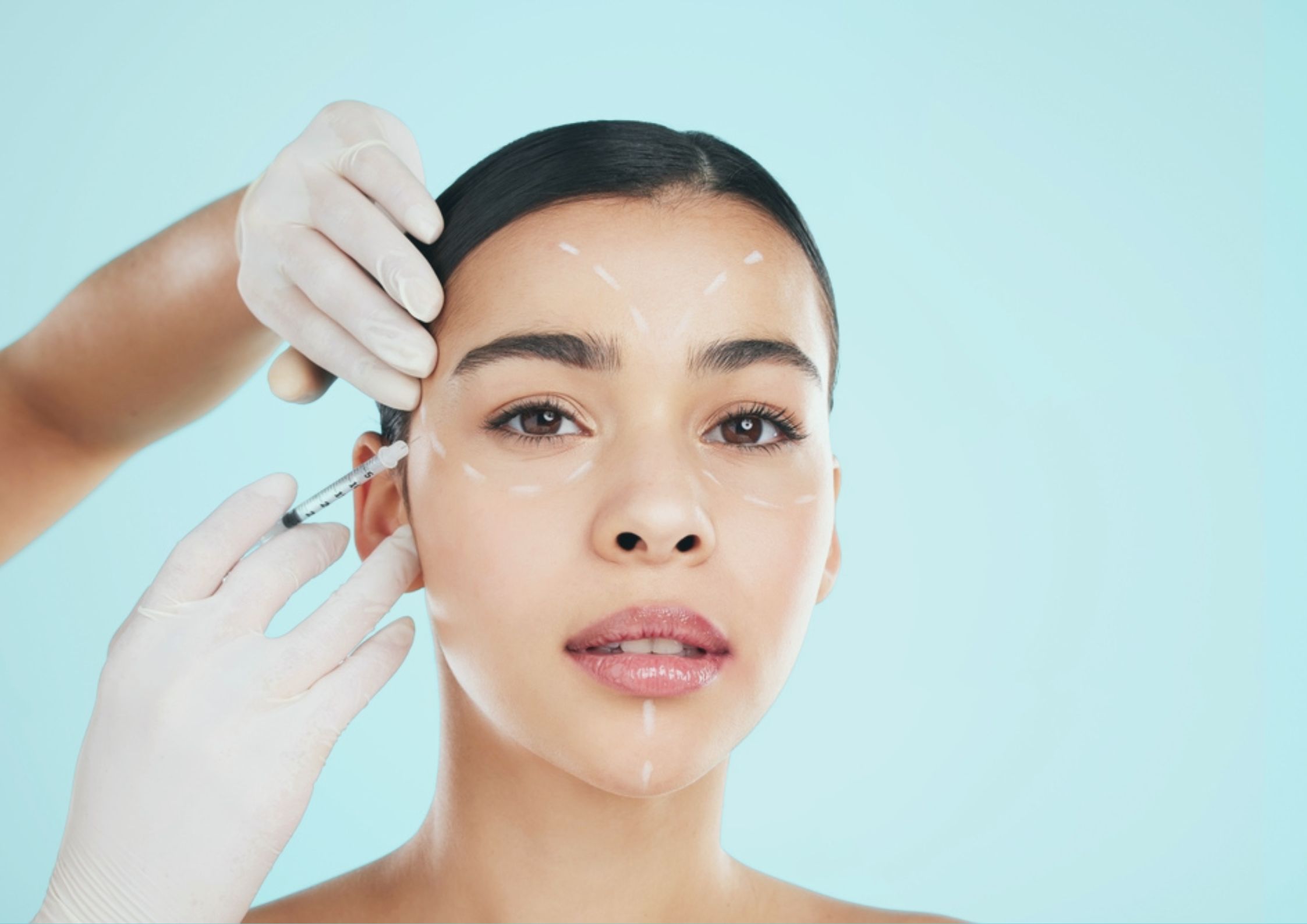Research has revealed the age groups most likely to get botulinum toxin, and surprisingly, Gen-Z failed to make any of the top spots despite perceptions that they are one of the most interested age groups in having injectables. Millennials and older adults made the most botulinum toxin bookings.
Experts at the Harley Street Skin Clinic have compiled the ‘UK Botox Report’, compiling internal booking data to reveal several findings about botulinum toxin usage in the UK.
The research revealed that millennials and older adults are leading the botulinum toxin boom, with one in five botulinum toxin bookings made by people aged between 35 and 39.
Based on the booking data, the older the patients are, the more likely they are to get botulinum toxin.
The booking data revealed that the most common age ranges booking botulinum toxin were:
-
35 and 39
-
40 and 44
-
45 and 49

Boutulinum toxin is commonly used to reduce the appearance of wrinkles, so it is understandable that these age groups are more likely to seek botulinum toxin.
Botulinum toxin is also used as a preventative measure, as shown by the 104 people aged between 19 and 24 who made botulinum toxin bookings.
Unlike traditional botulinum toxin, preventative botulinum toxin is the term used to describe receiving botulinum toxin to prevent, rather than reverse, lines and wrinkles.
The study also displayed that women were most likely to get botulinum toxin, making 1,749 bookings out of the 2,143 bookings made since 2019, equating to 80% of the botulinum toxin bookings in this period.
One in six (16.4%) of botulinum toxin bookings were made by men. Despite making just 351 bookings since 2019, botulinum toxin is becoming more normalised among men, with the term ‘brotox’ being used to describe the trend.
Alternatives to botulinum toxin
Google search data revealed that botulinum toxin was the most commonly searched anti-wrinkle treatment between May 2021 and April 2025, with more than 400,000 searches annually.
Dysport was the second most popular form of wrinkle treatment, with 87,700 searches over the last four years. Dysport is only MHRA-approved for glabellar lines, the vertical wrinkles that appear between your eyebrows, also known as frown lines. Searches for Dysport have increased the most compared to any form of wrinkle treatment, with a rise of 55% from May 2021 to April 2025.
Searches for Xeomin were the third-highest compared to other forms of wrinkle treatment, rising by 26% over the last four years. Xeomin is a purified form of botulinum toxin type A, which doesn’t have the additional proteins found in regular botulinum toxin.
Jeuveau was the least popular form of wrinkle treatment, with 7,100 searches over the previous four years. However, it is becoming more popular in the UK, with a 40% increase in searches. Jeauveau is strictly for aesthetic use, whereas botulinum toxin is MHRA-approved for medical conditions such as headaches and eyelid spasms.
Google search data also revealed that, aside from reducing wrinkles, botulinum toxin is a popular treatment used for:
-
Jaw slimming: 50,960 searches
-
Scrotal: 46,070 searches
-
‘Barbie Botox’: 24,310 searches
-
Excessive sweating: 16,610 searches
You might also like:
New research reveals the most popular alternative uses for botulinum toxin



